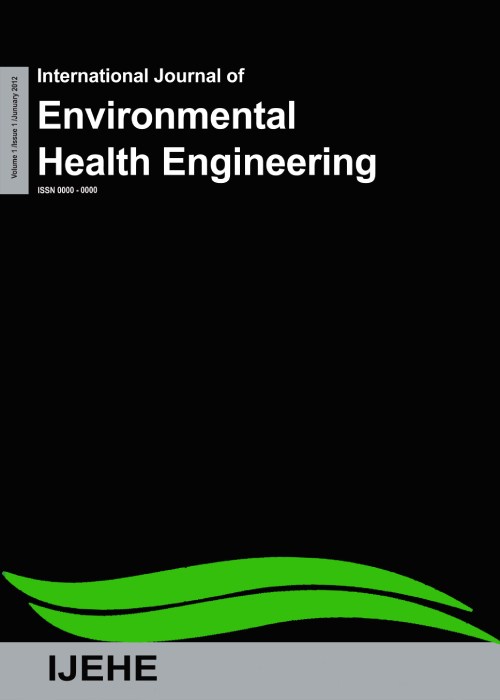فهرست مطالب
International Journal of Environmental Health Engineering
Volume:7 Issue: 3, Jun 2018
- تاریخ انتشار: 1397/03/11
- تعداد عناوین: 3
-
-
Page 1
Severe weather has always threatened human health. However, climate change is now recognized by the World Health Organization (WHO) as one of the leading global health threats of the 21st century (WHO 2009). In recent years, the many countries have experienced record-breaking summer heat. Climate change models forecast increasing India temperatures and more frequent heat waves in coming years. This scoping review summarizes research findings that characterize morbidity and mortality due to summer heat and identifies gaps in the existing research literature. Exposure to environmental heat is a significant, but overlooked, this small cross-sectional retrospective study found the incidence of illnesses due to summer heat and outcomes.
Keywords: Health morbidity, heat impact, summer heat -
Page 2Aim
Application of composting process for the management of organic solid waste led to the production of leachate, which causes many problems to environment. This study was aimed at investigation of ferro-sonication (FS) process in composting leachate degradation.
Materials and MethodsLeachate samples were collected in composting factory located in Isfahan. In each run, 400 ml of leachate was sonicationed through an ultrasonic homogenizer in a cylindrical glass reactor. Ferrous sulfate was added to the reactor as accelerator agent. The effect of various parameters including pH, ferrous sulfate doses, sonication times, and ultrasonic intensity was studied in the removal of chemical oxygen demand (COD) and biological oxygen demand (BOD) from composting leachate.
ResultsThe results showed that the COD and BOD removal rate was increased by increasing ferrous sulfate dosages, sonication time, and ultrasonic intensity. In addition, lower pH was favored for leachate degradation. In general, the optimum conditions for pH, ferrous sulfate dosage, irradiation time, and ultrasonic intensity were 3, 8 mmol, 180 min, and 150 W, respectively. Approximately 46% of COD and 33% of BOD were removed in optimum condition.
ConclusionThese results revealed that FS can be effective in degradation of compost leachate and can be presented as a good choice for pretreatment of leachate.
Keywords: Biological oxygen demand, Chemical oxygen demand, compost leachate, ferro‑sonication, ultrasonic -
Page 3Aims
The ability of extracellular polymeric substances (EPS) production was observed in many species of heterotrophic microorganisms through the biological wastewater treatment systems.
Materials and MethodsThe batch experiments at different carbon/nitrogen and solid retention time (SRT) were carried out to investigate the effects of initial nitrogen concentration and SRT on EPS production and chemical oxygen demand (COD) removal efficiency. The artificial neural network (ANN) was developed to modeling of obtained data.
ResultsThe results showed that: (i) with increasing SRT, the COD removal improves; (ii) initially, the amount of carbohydrate increases as SRT increases; however, with further increase of SRT, it declines; (iii) the protein/carbohydrate ratio improves as SRT decreases; (iv) the carbohydrate and protein concentration of soluble EPS increased with increasing initial nitrogen concentration from 0 to 10 mg/L; and (v) further increase of initial nitrogen concentration lead to depletion of carbohydrate production.
ConclusionThe highest yield (Y) value was calculated at low sludge age and deficient initial nitrogen concentration, which may be due to the application of EPS production mechanism. The ANN model moderately predicted effluent COD concentration, carbohydrate, and protein production.
Keywords: Artificial neural network model, Carbohydrate, Extracellular polymeric substances, nitrogen, Protein


